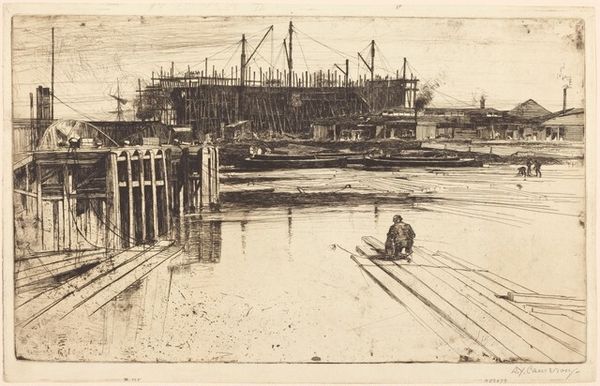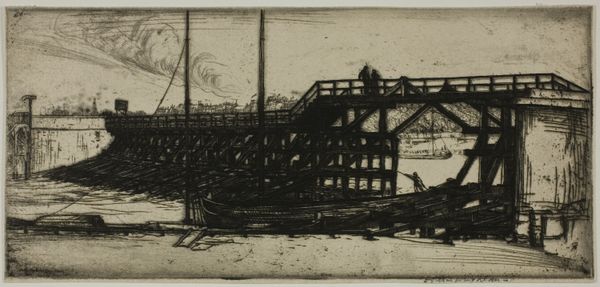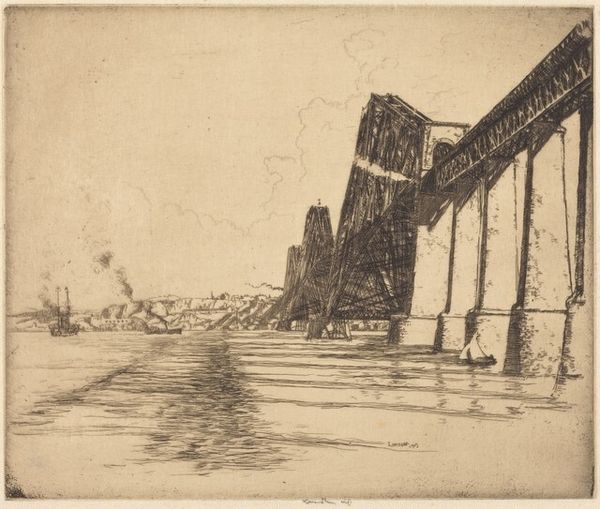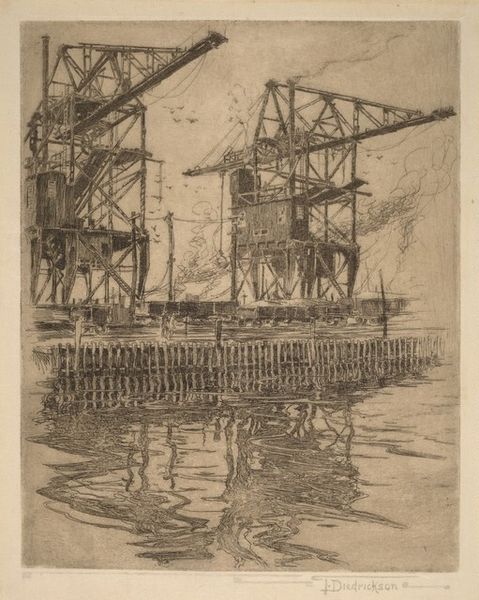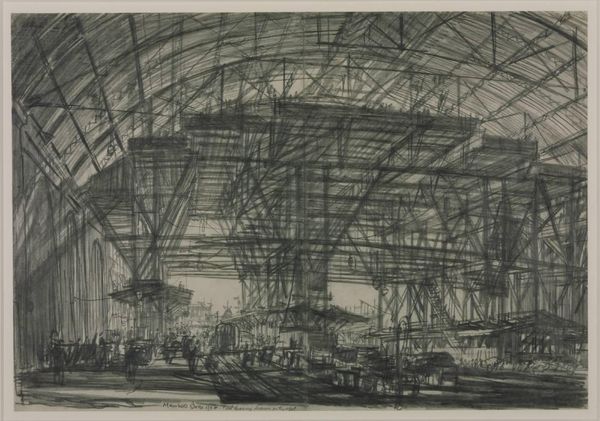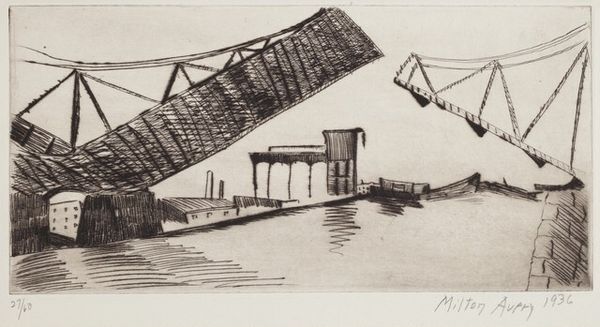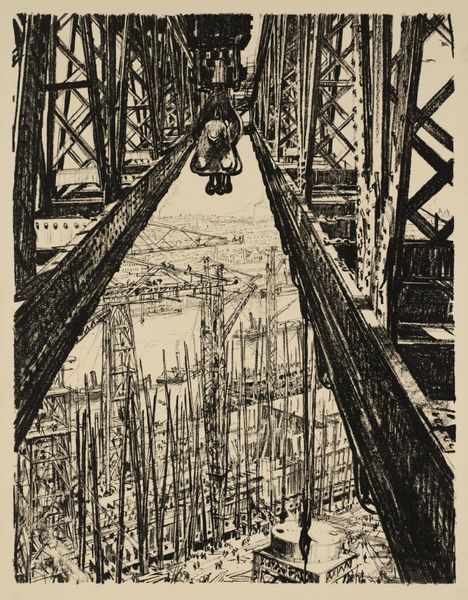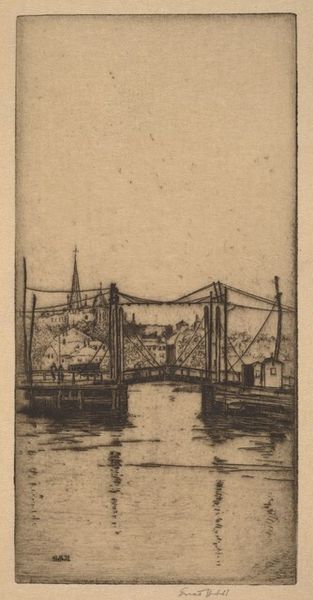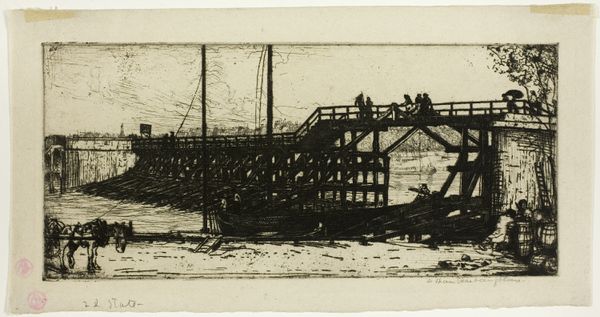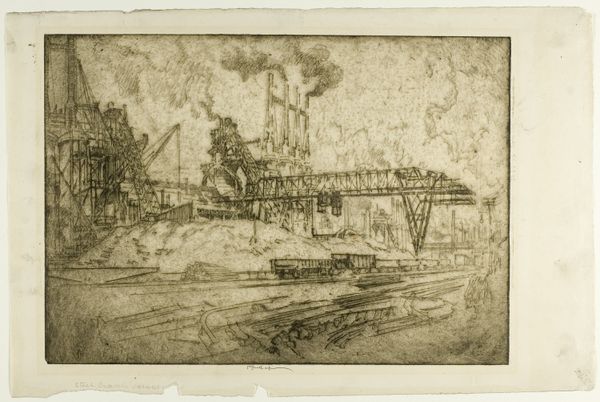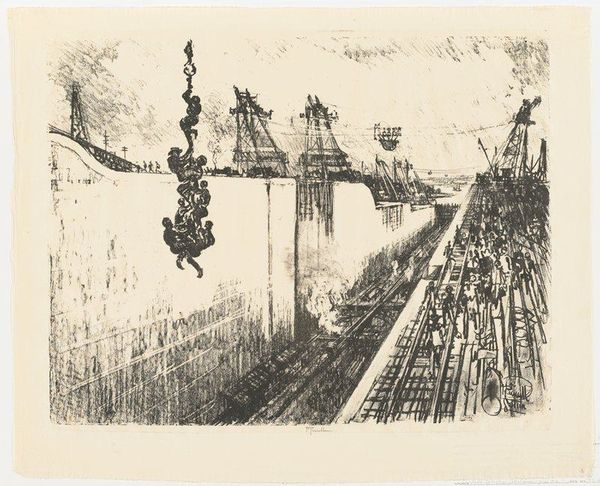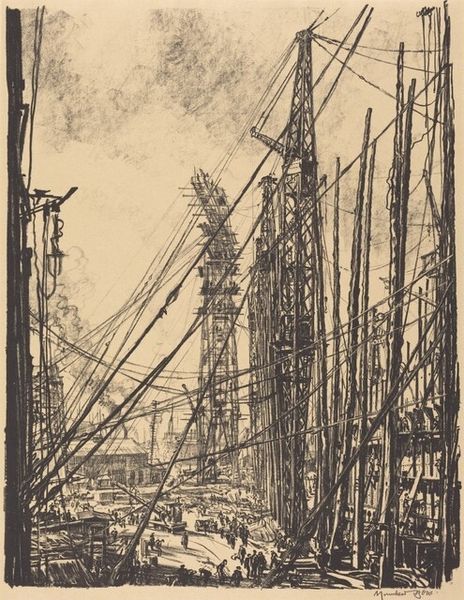
drawing, print, etching, ink
#
drawing
#
pen drawing
# print
#
etching
#
ink
#
cityscape
#
realism
Dimensions: plate: 25.08 × 36.2 cm (9 7/8 × 14 1/4 in.) sheet: 32.39 × 44.45 cm (12 3/4 × 17 1/2 in.)
Copyright: National Gallery of Art: CC0 1.0
Editor: This is Ian Strang's etching, "Rebuilding Southwark Bridge," from 1920. It's incredibly detailed, almost photographic, in its depiction of the bridge under construction. I'm struck by the contrast between the industrial nature of the scene and the delicate, almost fragile, lines of the etching itself. What do you see in this piece? Curator: For me, this etching serves as a powerful visual document of a specific moment in London's history, but it also raises questions about labour, progress, and representation. Look closely at the skeletal framework dominating the scene. It’s a monument to industry, but one also has to ask: Who is building this? Whose labour is invisibilized within this depiction of monumental achievement? Editor: That's a perspective I hadn't considered. I was mainly focused on the technical skill and the depiction of the industrial landscape. Curator: Exactly! And it's important to consider what that skill *serves*. Strang meticulously renders the complex architecture, yet the figures are absent. It compels us to think about the role of the artist, who gets remembered, and who gets erased from these narratives of progress. Does this etching celebrate engineering or question the human cost? Or perhaps both? Editor: So, by focusing on what's *not* there – the absent workers – we can gain a deeper understanding of the socio-political context of the work? Curator: Precisely. This artwork provides us with a lens to reflect on how urban development intersects with questions of power, class, and representation during the interwar period. How does seeing this piece in that light change your initial perception? Editor: It makes me consider the artist’s intentions in a new way, thinking about how artists like Strang were both celebrating modernity while potentially overlooking the societal costs of rapid industrial advancement. Thank you! Curator: Indeed. And that’s how we can approach art – not just as aesthetic objects but as critical texts that reveal and question the structures of our society.
Comments
No comments
Be the first to comment and join the conversation on the ultimate creative platform.
